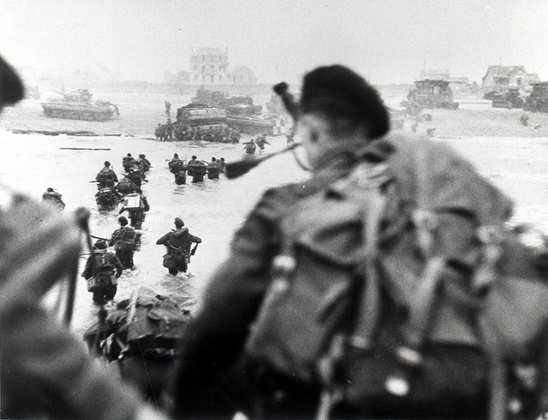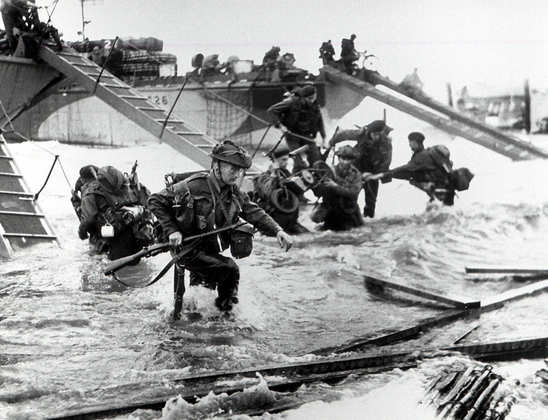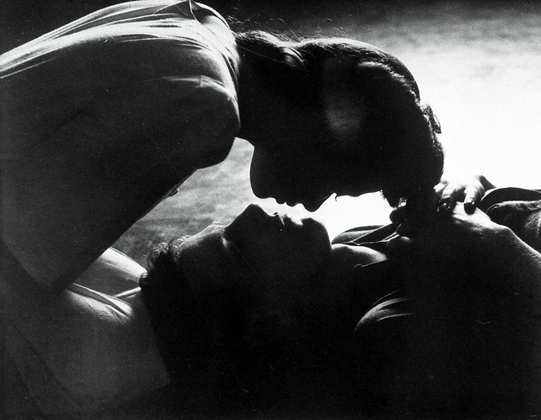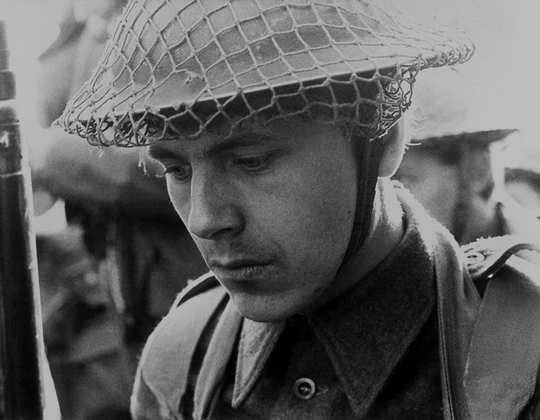Review for Overlord
Although ‘Overlord’ was entirely new to me, the fact that it boasted an ‘Imperial War Museum’ logo at the front end of the film, boosted its credence immediately and certainly caught my attention. As it turns out, deservedly so as it is a remarkable film.
Cleverly intertwining existing (and sometimes unseen) archival footage with newly shot scenes, replete with dialogue, Overlord is an incredible achievement both creatively and technically. In a pre-CGI, pre-electronic grading age (1975 to be precise) it’s nigh on impossible to see where the original, authentic archival footage stops and the new footage begins. Of course, that may partly be as a result of the film’s narrative, direction and excellent acting which results in a complete immersion where the story itself is so absorbing that any ‘spot the difference’ exercise is quickly forgotten.
Tom (Brian Stirner) is just 20 years old when he’s drafted into the British army towards the back-end of World War II. He’s portrayed as a normal, likable lad from a good home, with proud parents who wish him the best of luck as he leaves for the station to camp.
Arriving later than some of the other recruits, due to getting caught up in some bombing which delays his train, he is swiftly integrated into the group and into basic training. He, like many others, - cannot throw off the gnawing feeling that he will inevitably die in battle.
Eventually he and his unit are sent to the South Coast in quiet anticipation of major manoeuvres. It’s an agonising time of waiting, made worse by having to complete a will. When he asks why, the Corporal asks him ‘Why do you think?’. The gravity of that sinks in as he prepares himself for battle.
It transpires that he is to be part of the D-Day assault on Normandy – part of the front-runners who will the first to storm the beaches on arrival.
Before the day arrives, he meets a local girl, Janie (Julie Neesam) at a local dance and he falls in love. Now, having something really important to live for, life suddenly seems more precious than ever and he dreams of his demise in nightmares that haunt him.
I won’t spoil the ending but the film rather brilliantly ends as the troops arrive in Normandy. In other words, the start of the real battle signals the end of the film.
Not only does the film use plenty of real-life archival footage, much of the narrative and dialogue is based on letters retained by the war museum, adding to the film’s sense of authenticity. Whilst it’s not a documentary, it is a highly realistic dramatization with more than a hint of reality to it.
According to one of the extra features, the film was commissioned rather than the original intent, which was to create a tapestry outlining D-Day, much in the same way as battles of yore had been maintained for future generations. Stuart Cooper, a young American director, had intervened and suggested a film would be a far more powerful way to record and communicate the story. He was right.
Though generally not too bloody, there are some shots which may disturb the squeamish – like real footage of enemy soldiers burned alive during blanket bombings. There are some amazing archival scenes too, with bombing sorties looking like spectacular firework displays.
The film is a mesmerising, time-eating 85 minutes only and it struck me that it really ought to be viewed as part of the history syllabus in schools to really ignite the imaginations of those youngsters studying the war and its impact.
Extra features abound, as seems to be the form with Criterions.
First up is an excellent and informative commentary from those who should know most about the film, Cooper and actor Brian Stirner.
Mining the Archive, is a nice a 2007 film featuring film archivists from London’s Imperial War Museum.
Capa Influences Cooper, is a photo essay featuring Cooper talking about the photographer, Robert Capa.
Cameramen at War is an archival Ministry of Information’s film tribute to newsreel and service film unit cameramen and the conditions they worked under , as well as the results they achieved. Also included is ‘A Test of Violence’ (1969) , a short-film from Cooper’s about the Spanish artist Juan Genovés.
Next up is Germany Calling, a Ministry of Information film, which features many of the clips that later show up in Overlord.
There are also some extremely poignant excerpts the journals of two D-day soldiers, read by Stirner.
Finally, a trailer and a small booklet featuring an essay by Kent Jones as well a short history of the Inperial War Museum, and some extracts from a novel by Cooper and co- screenwriter Christopher Hudson based on Overlord.
Overlord is thoroughly recommended to film-boffins, history lovers and anyone with a curiosity about why people behave as they do. Absolutely brilliant and well worth a second watch.





Your Opinions and Comments
Be the first to post a comment!